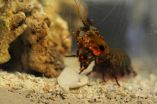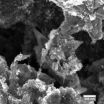(Press-News.org) Bethesda, MD, April 22, 2014: The Association for Molecular Pathology (AMP) released a report today in The Journal of Molecular Diagnostics on recommendations for a molecular diagnostics curriculum at both the baccalaureate and master's levels of education. The report was prepared by the Medical Laboratory Scientist (MLS) Curriculum Task Force of the AMP Training and Education Committee. "Our goal was to address the critical need of educating future medical laboratory scientists appropriately in order to manage the rapidly growing and changing realm of molecular diagnostic testing," said Sara Taylor, PhD, Task Force Co-Chair and a first author on the paper.
The challenge, as stated in the report, is to balance the requirements of accreditation, certification, and the needs of the job market. To address that challenge, the recommendations are based on input from three key elements: 1) the National Accrediting Agency for Clinical Laboratory Sciences (NAACLS) guidelines for accreditation of molecular diagnostics programs; 2) guidelines of several key certifying bodies for clinical laboratory scientists; and, 3) feedback from current employers of molecular diagnostics scientists via a survey of AMP members.
In addition, the curriculum recommendations are directed towards three major academic levels of laboratory scientists who perform molecular diagnostic testing - the generalist MLS/CLS, and both the bachelors and masters-level lab scientists with specialized molecular training.
AMP concludes that up-and-coming molecular diagnostic laboratory scientists should complete an NAACLS accredited training program, then become certified or licensed in their state of employment. The specific curriculum recommendations, if adopted, will prepare tomorrow's medical laboratory scientists for the reality that molecular diagnostics are an integral and growing part of the clinical diagnostic laboratory.
"As the organization that is home to all molecular diagnostic professionals, AMP has a responsibility to help guide the training for future molecular technologists," said Elaine Lyon, PhD, AMP President. "The demand for specially-trained scientists who are capable of performing high complexity testing is growing. The recommendations set forth by the MLS Task Force will help to support the rapid advances in genomic technology and techniques."
INFORMATION:
The full text of today's article is available online at: http://dx.doi.org/10.1016/j.jmoldx.2014.02.003. Additional curriculum recommendations for fellows and residents are currently being developed by AMP and will be released in the coming months.
ABOUT AMP:
The Association for Molecular Pathology (AMP) was founded in 1994 to provide structure and leadership to what was, at the time, the newly-emerging field of molecular diagnostics. Through the efforts of its Board of Directors, Committees, Working Groups, and members, AMP has established itself as the primary resource for expertise, education, and collaboration on what is now one of the fastest growing fields in science. AMP members influence policy and regulation on the national and international levels; ultimately serving to advance innovation in the field and protect patient access to high quality, appropriate testing.
AMP's 2,000+ members include individuals from academic and community medical centers, government, and industry; including, basic and translational scientists, pathologist and doctoral scientist laboratory directors, medical technologists, and trainees. AMP members span the globe with members in more than 45 countries and a growing number of AMP International Affiliate Organizations. The number of AMP members is growing rapidly; they are united by the goal of advancing the science and implementation of molecular pathology. For more information, please visit http://www.amp.org.
CONTACT:
Catherine Davidge
cdavidge@amp.org
(301) 634-7400
AMP publishes curriculum recommendations for medical laboratory scientists
2014-04-22
ELSE PRESS RELEASES FROM THIS DATE:
New patenting guidelines are needed for biotechnology
2014-04-22
HOUSTON – (April 22, 2014) – Biotechnology scientists must be aware of the broad patent landscape and push for new patent and licensing guidelines, according to a new paper from Rice University's Baker Institute for Public Policy.
Published in the current issue of the journal Regenerative Medicine, the paper is based on the June 2013 U.S. Supreme Court ruling in the case Association for Molecular Pathology (AMP) v. Myriad Genetics that naturally occurring genes are unpatentable. The court case and rulings garnered discussion in the public about patenting biological materials.
"The ...
Mantis shrimp stronger than airplanes
2014-04-22
RIVERSIDE, Calif. — Inspired by the fist-like club of a mantis shrimp, a team of researchers led by University of California, Riverside, in collaboration with University of Southern California and Purdue University, have developed a design structure for composite materials that is more impact resistant and tougher than the standard used in airplanes.
"The more we study the club of this tiny crustacean, the more we realize its structure could improve so many things we use every day," said David Kisailus, a Kavli Fellow of the National Academy of Science and the Winston ...
NASA gets 2 last looks at Tropical Cyclone Jack
2014-04-22
VIDEO:
This 3-D flyby from NASA's TRMM satellite of Tropical Cyclone Jack on April 21 shows that some of the thunderstorms were shown by TRMM PR were still reaching height of...
Click here for more information.
Tropical Cyclone Jack lost its credentials today, April 22, as it no longer qualified as a tropical cyclone. However, before it weakened, NASA's TRMM satellite took a "second look" at the storm yesterday.
The Tropical Rainfall Measuring Mission or TRMM satellite had two ...
High-performance, low-cost ultracapacitors built with graphene and carbon nanotubes
2014-04-22
WASHINGTON D.C., April 22, 2014 -- By combining the powers of two single-atom-thick carbon structures, researchers at the George Washington University's Micro-propulsion and Nanotechnology Laboratory have created a new ultracapacitor that is both high performance and low cost.
The device, described in the Journal of Applied Physics, capitalizes on the synergy brought by mixing graphene flakes with single-walled carbon nanotubes, two carbon nanostructures with complementary properties.
Ultracapacitors are souped-up energy storage devices that hold high amounts of energy ...
International team sequences rainbow trout genome
2014-04-22
PULLMAN, Wash.—Using fish bred at Washington State University, an international team of researchers has mapped the genetic profile of the rainbow trout, a versatile salmonid whose relatively recent genetic history opens a window into how vertebrates evolve.
The 30-person team, led by Yann Guiguen of the French National Institute for Agricultural Research, reports its findings this week in Nature Communications.
The investigators focused on the rate at which genes have evolved since a rare genome doubling event occurred in the rainbow trout approximately 100 million years ...
Wildlife response to climate change is likely underestimated, experts warn
2014-04-22
AMHERST, Mass. – Analyzing thousands of breeding bird surveys sent in by citizen scientists across the western United States and Canada over 35 years, wildlife researchers report that most of the 40 songbird species they studied shifted either northward or toward higher elevation in response to climate change, but did not necessarily do both.
This means that most previous studies of potential climate change impacts on wildlife that looked only at one factor or the other have likely underestimated the effects of environmental warming, say research wildlife biologists ...
Vacuum ultraviolet lamp of the future created in Japan
2014-04-22
WASHINGTON D.C., April 22, 2014 -- A team of researchers in Japan has developed a solid-state lamp that emits high-energy ultraviolet (UV) light at the shortest wavelengths ever recorded for such a device, from 140 to 220 nanometers. This is within the range of vacuum-UV light -- so named because while light of that energy can propagate in a vacuum, it is quickly absorbed by oxygen in the air.
This fact makes vacuum UV light extremely useful for industrial applications from sterilizing medical devices to cleaning semiconductor substrates because when it strikes oxygen-containing ...
Applying math to biology: Software identifies disease-causing mutations in undiagnosed illnesses
2014-04-22
(SALT LAKE CITY)–A computational tool developed at the University of Utah (U of U) has successfully identified diseases with unknown gene mutations in three separate cases, U of U researchers and their colleagues report in a new study in The American Journal of Human Genetics. The software, Phevor (Phenotype Driven Variant Ontological Re-ranking tool), identifies undiagnosed illnesses and unknown gene mutations by analyzing the exomes, or areas of DNA where proteins that code for genes are made, in individual patients and small families.
Sequencing the genomes of individuals ...
New electric fish genus and species discovered in Brazil's Rio Negro
2014-04-22
AMHERST, Mass. – Scientists at the University of Massachusetts Amherst and the Instituto Nacional de Pesquisas da Amazônia (INPA), Brazil, this week report that they have discovered a new genus and species of electric knifefish in several tributaries of the Negro River in the Amazonia State of Brazil.
Professor Cristina Cox Fernandes at UMass Amherst, with Adília Nogueira and José Antônio Alves-Gomes of INPA, describe the new bluntnose knifefish in the current issue of the journal Proceedings of the Natural Sciences of Philadelphia.
Their paper offers details about ...
Neurotics don't just avoid action: They dislike it
2014-04-22
PHILADELPHIA (April 22, 2014) – That person we all seem to know who we say is neurotic and unable to take action? Turns out he or she isn't unable to act but simply doesn't want to.
A study of nearly 4,000 college students in 19 countries has uncovered new details about why neurotic people may avoid making decisions and moving forward with life. Turns out that when they are asked if action is positive, favorable, good, they just don't like it as much as non-neurotics. Therefore persuasive communications and other interventions may be useful if they simply alter ...





